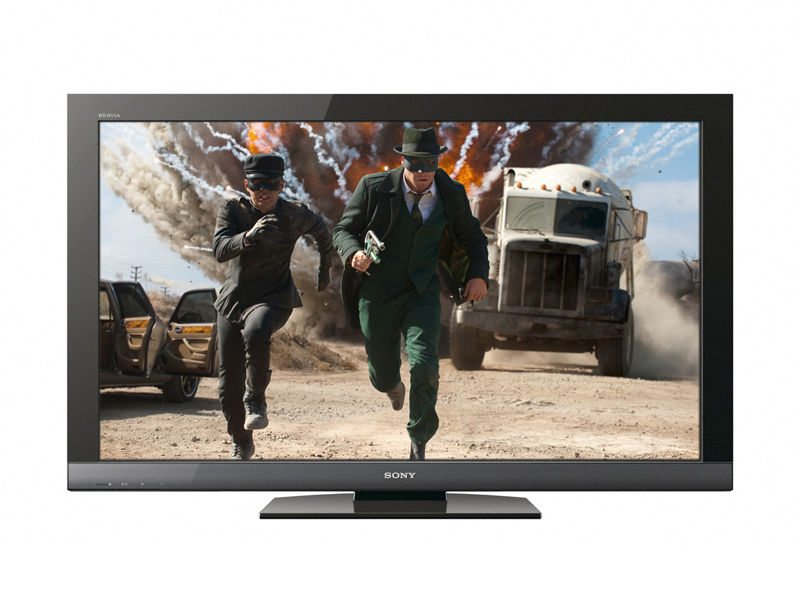Why you can trust TechRadar

The 37EX403 is well specified for such an affordable TV. Its Freeview HD tuner is attached to a 1080p panel and there is an Ethernet port for future interactive features. The latter also enables the TV to stream files from DLNA-certified PCs, and access Sony's Bravia Internet Video online service.
Finding either of these multimedia tricks on such an affordable Sony TV would have classed as a pleasant surprise, so finding both is a real boon, especially as the list of supported files extends to video, as well as music and photo formats.
A USB port plays the same file formats as the DLNA-enabled Ethernet jack and also gives you the option of adding a UWA-BR100 dongle to enable your TV to access your network wirelessly.
With this in mind it's a pity Sony couldn't see its way to providing two USB ports, as many of its rivals do, as only having one means you might potentially have to keep swapping over between a Wi-Fi dongle and a multimedia USB storage device. Mind you, none of Sony's other current TVs offer two USBs, either.
Joining the 37EX403's multimedia connections are a respectable four HDMIs.
The Bravia Engine 3 picture processing system includes Sony's LiveColour and 24p True Cinema software for boosting colour saturation and for enhanced playback of 24p Blu-ray sources respectively.
There is no 100Hz, 200Hz or 400Hz motion processing, but this is acceptable at this price.
The backlight is standard CCFL (cold-cathode fluorescent), rather than LED, but while this might cost the set a little in terms of brightness, contrast and colour saturation, Sony has often delivered better results with CCFL than most other brands.
Sign up for breaking news, reviews, opinion, top tech deals, and more.
Most TVs these days carry some sort of 'eye' for monitoring the amount of light in your room and adjusting the picture settings accordingly. But the 'Ambient Sensor' in the 37EX403 goes further than most by being able to measure and react to the colour temperature of ambient light, as well as just its brightness.
As noted in the introduction to this review, though, arguably the 37EX403's standout feature is its Bravia Internet Video system. Especially as this has recently being expanded from its already class-leading content level by the addition of Qriocity.
This, briefly, is a video on demand service, enabling you to pay to download – or rather, downstream – films from a variety of genres, with some available in HD. The price of each film varies according to how new it is and whether it's HD or standard-def and Sony recommends that you have at least a 1.5Mb/s Broadband connection for standard-def, and nearer 4.5Mb/s to guarantee stability with HD films.
Qriocity isn't the only new service available via the Bravia Internet Video online platform. Sky has launched a news app that provides you with instant, on-demand access to the latest headlines, plus entertainment, weather and sports coverage. The interface for this new service wasn't fully formed at the time of writing, but is a fine addition to the already impressive BVI content list.
This content list also includes the BBC iPlayer, the Demand Five Channel 5 catch-up service, a welter of TV shows from Sony Entertainment Television, World Cup highlights from FIFA, Eurosport feeds, the inevitable YouTube access and a host of more esoteric stuff such as a FordModels 'channel', 'how to' documentaries from howcast.com, and the LoveFilm portal.
The latter arguably makes Qriocity look a bit redundant - not least because it has many more films to choose from. The fact that it demands a £9.99 monthly subscription, rather than Qriocity's pay-per-view approach might work against it here, though.
Current page: Sony Bravia KDL37EX403: Features
Prev Page Sony Bravia KDL37EX403: Overview Next Page Sony Bravia KDL37EX403: Picture quality
John has been writing about home entertainment technology for more than two decades - an especially impressive feat considering he still claims to only be 35 years old (yeah, right). In that time he’s reviewed hundreds if not thousands of TVs, projectors and speakers, and spent frankly far too long sitting by himself in a dark room.
